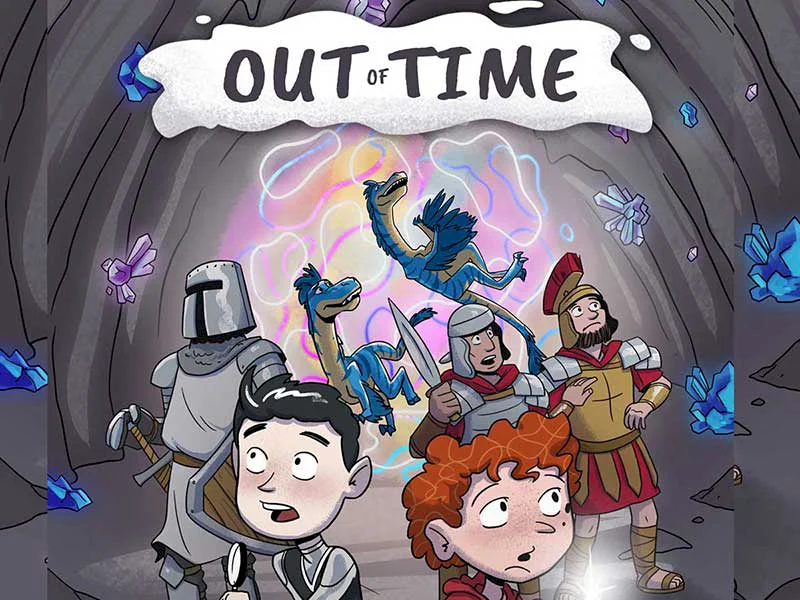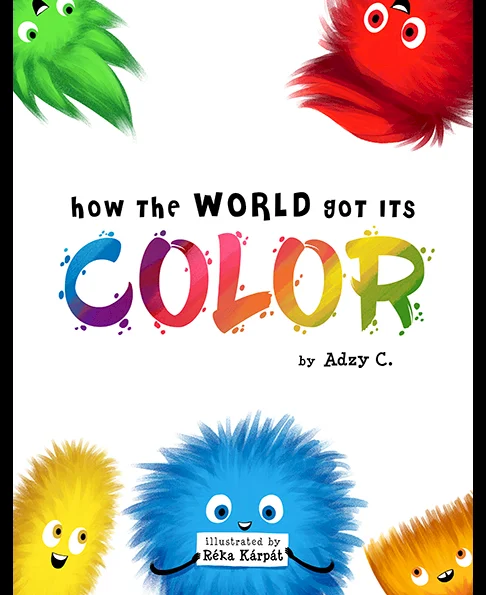In the world of child development, emotional literacy is a foundation. It lays the groundwork for children to learn about, communicate, and regulate their feelings successfully. With a changing world full of new challenges, teaching children the skills to work through feelings of anxiety, resilience, and mindfulness can do a lot to boost their mental health.
Illustrations play a crucial role in this process. Using colorful, engaging images, children’s book illustrators bring challenging emotions to life, encouraging young readers to experience their emotions in a positive way.
At Deveo Studio, we specialize in creating engaging and educational visuals that help parents and authors bring essential themes of emotional literacy to life. Whether you’re looking to hire a book illustrator or simply explore our capabilities, we’re here to support you on this transformative journey.
Understanding Emotional Literacy in Children
Emotional literacy is the ability to recognize, understand, and manage one’s own emotions as well as those of others. This is crucial in children’s development, as it sets the foundation for healthy relationships and self-awareness.
Teaching children to recognize emotions like anxiety, resilience, and mindfulness from a young age is paramount. When children can identify their feelings, they are better equipped to handle life’s ups and downs. Unfortunately, many kids struggle to express these emotions verbally, leading to confusion and frustration. This is where visual storytelling shines.
Illustrations provide a special means of filling this gap. By conveying emotions through characters, colors, and settings, children’s book illustrators can help children visualize feelings in a manner that is both accessible and appealing to them, thereby making understanding not only simpler but also more engaging.
Why Understanding Emotional Literacy in Children Is Important?
Emotional literacy is important for many reasons. Most importantly, it prepares children with the skills they need for healthy emotional expression. Children who can express their feelings have healthier peer relationships, do better in school, and manage social conflicts more skillfully.
In addition, acquiring emotional literacy will reduce cases of depression and anxiety. Children who understand their emotions can better manage stress and ask for help when they need it. This knowledge fosters resilience and the ability to recover from adversity, which is essential in a world where challenges are inevitable.
Ultimately, developing emotional literacy enables children to be empathetic, allowing them to connect with others more effectively. When children can identify emotions in their peers, they are less likely to bully and exclude others, making the overall environment more friendly.
Techniques for Depicting Anxiety in Children’s Illustrations
Anxiety is a common feeling that most children go through, but it is hard to depict on paper. Fortunately, accomplished children’s book illustrators have many tricks in their arsenal to depict anxiety.
A visual depiction of worry can begin with expressive characters. For example, overemphasized facial expressions, such as wide eyes or furrowed brows, can convey concern immediately. Moreover, situations that show familiar environments, such as a busy school hallway or a dark room, can give context to worrisome emotions.
Color psychology also proves useful in depicting anxiety. Muted and cool colors, such as blues and grays, can evoke a feeling of fear or uncertainty. To make the feeling more realistic for children, you may incorporate disordered lines or scribbles in the background to represent inner conflict.
Visual metaphors are another strong tool. Using shadow monsters or knotted lines, for example, can be used as metaphors for anxiety. Illustrating feelings this way allows a children’s book illustrator to make the reader feel less scared by these emotions.
By making anxiety understandable through skilled techniques, children’s book illustrators let young readers realize they are not alone in their emotions.
Illustrating Resilience Through Characters and Color
Resilience is a strong theme in children’s literature, and depicting it successfully necessitates an earnest approach. Resilience can be described as the ability to bounce back from adversity and adapt positively to hardship, making it an empowering theme for children.
In pictures, resilient characters can be depicted in strong, standing poses. The visual signal can encourage young readers to have equal strength. Vibrant and warm colors such as yellows and oranges can represent optimism and hope, reinforcing the message that it is possible to overcome challenges.
Employing narrative development in pictures is effective, too. For example, depicting a character struggling, stumbling, and ultimately getting back up can be a powerful visual narrative of resilience.
Expressive characters with resolute facial expressions further add to this theme. When children observe characters exhibiting resolve and confidence, they are more likely to identify with resilience, which energizes their belief in themselves.
Hiring a book illustrator with expertise in emotional storytelling can significantly enhance these themes, allowing your messages to resonate deeply with your audience.
Visualizing Mindfulness and Calm
Mindfulness is more and more seen to have a positive effect on children’s mental well-being, offering ways to cope with anxiety and stress. Depicting mindfulness is achieved through the creation of peaceful and calming images that induce a sense of peace and calmness.
Soft colors featuring pale greens and blues can create illustrations that are serene and peaceful. Soothing, flowing lines can be used to symbolize peace, leading children to a peaceful destination.
Images showing breathing exercises, landscapes, or peaceful moments promote mindfulness. Visual references, such as characters engaging in deep breathing sessions or visiting peaceful environments, can help children become involved and encourage them to practice mindfulness in their daily lives.
A skillful children’s book illustrator plays a significant role in creating peaceful images that promote mindfulness and help children develop emotional clarity.
Why Hire a Professional Children’s Book Illustrator?
The significance of professional illustration cannot be emphasized enough in the portrayal of mental health themes. Our skilled children’s book illustrators at Deveo Studio expertly synthesize artistic ability with psychological understanding.
By engaging a book illustrator, you unleash many advantages. These include customized images that support your message, emotional authenticity in character depictions, and a compelling narrative that appeals to children’s imaginations.
If you see the benefits of emotional literacy in children’s books and are looking to share these critical themes, think about reaching out to Deveo Studio. Having a book illustrator from our skilled team on board can help bring your mental health narrative to vivid life.
Conclusion
Illustrations serve as vital tools in teaching children about anxiety, resilience, and mindfulness. Through the use of color psychology and expressive characters, children’s book illustrators play a significant role in enhancing emotional literacy among young readers.
We encourage writers and parents to consider the significant difference that professional illustrators, such as those at Deveo Studio, can make in producing impactful children’s books. Let’s take a collaborative approach to producing stories that not only entertain but also help children’s mental health and emotional development. Collectively, we can inspire the next generation, one page at a time.







